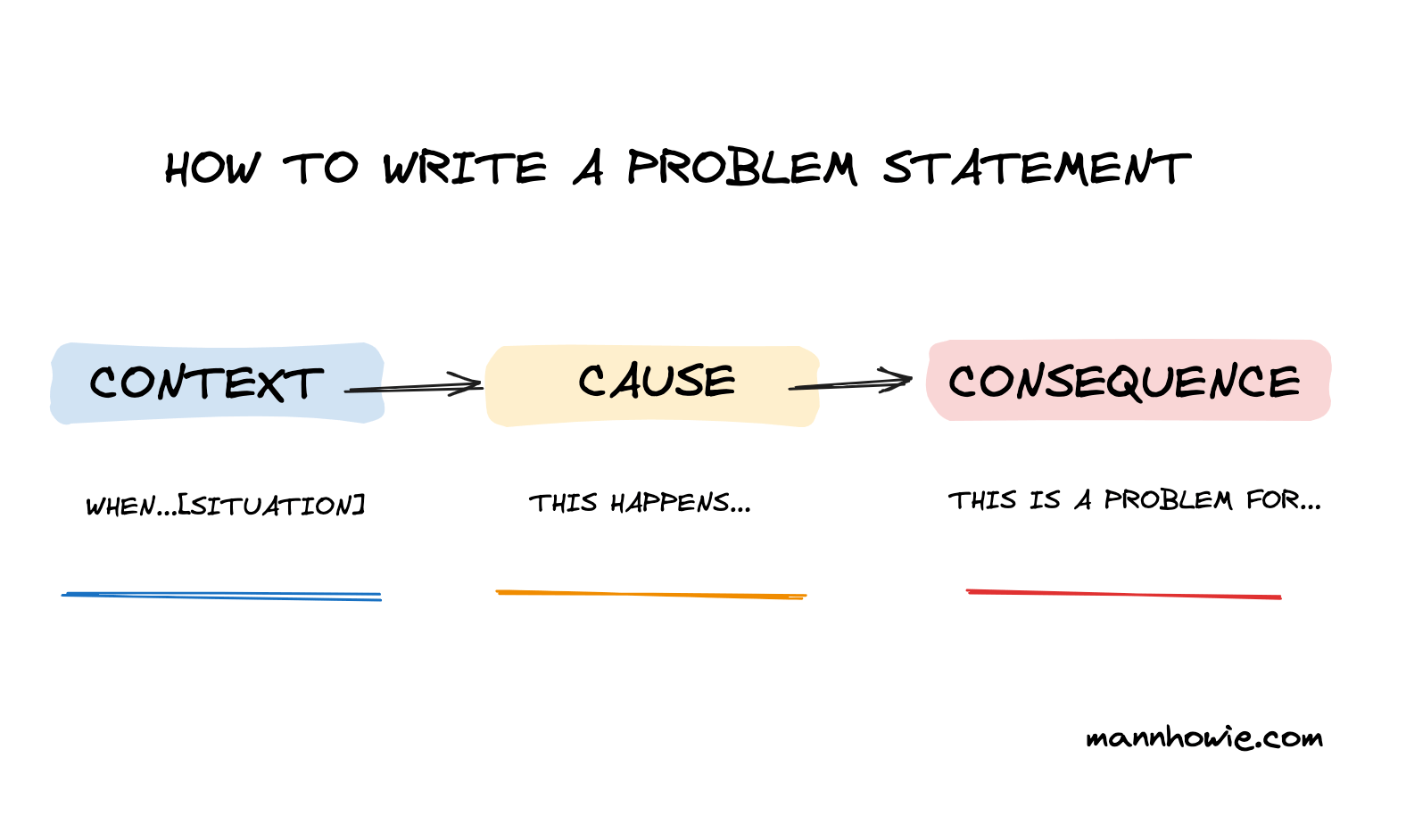How to write a problem statement: The 3 components
4 minute read | Aug 24, 2024
product, engineering, management
Here are the three C’s to writing a clear problem statement:
- Context: When… [specific situation].
- Cause: This can cause… [negative impact].
- Consequence: This is problematic because… [impact on the customer or company].

Sections:
- Step 1: Identify the problem
- Step 2: Quantify the problem
- Step 3: Getting stuck
- Step 4: Reframe the problem
A Real-World Example
Our team received anecdotal feedback that our software, used for real-time equipment monitoring, was generating false alarms due to incorrect IoT sensor data integration.
Step 1: Identify the Problem
The first step was to clearly define the problem. Using the 3 C’s—Context, Cause, and Consequence—here’s what we came up with:
- Context: When IoT sensor data is mapped to incorrect equipment, alerts may trigger on machinery that is functioning properly.
- Cause: This can cause end users to doubt the accuracy of the alerts, leading to decreased product engagement.
- Consequence: This is problematic because major customers rely on end-user feedback when deciding on renewals.
Identifying the root cause was challenging due to multiple factors: incorrect initial mapping, sensor relocation, misinterpretation by users, or errors during the original hardware installation. With millions of sensors in play, this was a complex problem to identify and solve.
Step 2: Quantify the Problem
Next, we attempted to quantify the issue by determining the percentage of IoT sensor data points that were incorrectly mapped. We narrowed our focus to data points with alert monitoring and used existing machine learning models to identify inconsistencies.
Step 3: Getting Stuck
Despite our efforts, quantifying the problem proved to be difficult. We would have needed significant human resources to QA the inconsistencies, and even then, end-user engagement was essential to verify these issues. We hit a roadblock—unable to quantify the problem confidently, with potential solutions both costly and uncertain.
Step 4: Reframe the Problem
In an attempt to get unstuck, we revisited the problem statement, shifting our focus from the Context to the Cause. The core issue was that end users were complaining about alert quality. We reframed the problem by asking: “What are the most frequent end-user complaints about alert quality?”
This reframing made the problem more manageable. By leveraging off-the-shelf language models to analyse end-user comments and notes, we manually reviewed a focused list of user feedback.
This approach uncovered a new insight: complaints about incorrectly mapped data were minimal. The bigger issue was our lack of responsiveness to user feedback. Users weren’t raising support tickets through the proper channels, meaning their concerns went unnoticed.
While the Cause and Consequence of our initial problem statement remained the same, reframing the Context led us to a revised problem statement:
- Context: When users add comments questioning alerts, these concerns can go unnoticed by our support team.
- Cause: This can cause end users to doubt the accuracy of the alerts, leading to decreased product engagement.
- Consequence: This is problematic because major customers rely on end-user feedback when deciding on renewals.
Step 5: Solve the Problem
By refining our problem statement and aligning the data with the issue, we were better equipped to address the problem. We took several steps to solve it:
- Prioritised and responded to recent user complaints.
- Forwarded all future complaints directly to our support queue.
- Educated users on available support options to address their concerns.
Remember the 3 C's
When writing a problem statement, remember the 3 C’s—Context, Cause, and Consequence. When you hit a roadblock, reviewing the 3C’s can help you reframe and better solve the problem.
Want more tips?
Get future posts with actionable tips in under 5 minutes and a bonus cheat sheet on '10 Biases Everyone Should Know'.
Your email stays private. No ads ever. Unsubscribe anytime.
